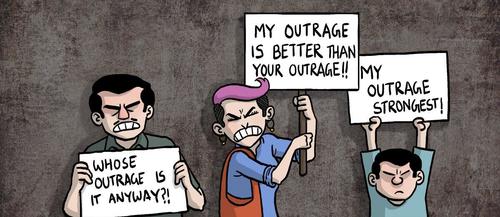Authored by Olivia Eriksen via RealClearEnergy.com,
If you say the phrase ‘virtue signaling’ nowadays, the chances are you’ll be met with people becoming increasingly defensive, claiming that everything has to be picked apart and overanalysed.
However, that’s not the case.
This article is going to unpack what exactly virtue signaling is, discuss why it’s so dangerous, and offer some examples of everyday virtue signaling from both the wider public and public organisations.

So, what is virtue signaling?
Virtue signaling is defined at the act of publicly expressing opinions in order to demonstrate that you are a good person. However, this has become muddied with placing more importance on the appearance of moral correctness, than the correctness itself.
There are of course some instances in which claiming that a person or organisation is virtue signaling is untrue, however there are many cases in which good is only done at the bare minimum level, and it’s only done in order to receive praise. This is dangerous virtue signaling.
Why is it so dangerous?
There are a number of reasons why virtue signaling is dangerous, not least because it encourages a climate of reduced empathy and understanding of others, the motives behind acts become warped, and it creates a world in which the bare minimum becomes the accepted standard.
Doing a good deed to help another should come from a place of empathy and compassion. But, when it is done to serve a selfish desire for public praise, this understanding for others is shallow at best. A social injustice cannot be truly understood if someone is only looking at it in terms of how they can utilise it to boost their public image. When good deeds become less about doing good and more about self-promotion, are they really good deeds anymore?
There is an argument to be made that whatever the motive, doing good will be beneficial to someone, somewhere, however all too often when virtue signaling is involved, it’s likely that only the bare minimum of support is being given. And, when virtue signaling is normalised, so too is this minimal level of effort, and it doesn’t take long for this level to become the accepted standard.
Virtue signaling in the wider public
Social media is a massive culprit for opening the door to mass virtue signaling in the greater public. With offering support being as easy – and requiring very little thought – as sharing someone’s Instagram story, or re-tweeting something on Twitter, feeds have been flooded with posts that stand up against social issues.
While this is great and is a vital step towards affecting change, it’s telling how quickly the support fades. Take the Black Lives Matter movement of 2020, and the Sarah Everard case of this year as examples. For weeks after the horrendous events that triggered these social movements, social media was overflowing with support for those affected by racial or gendered discrimination and abuse. But, for as quickly as the support came, it disappeared just as fast. Social media has made virtue signaling trendy, which ultimately offers no help to those who need it.
Continue: Zerohedge.com




Leave a Reply